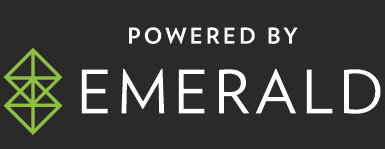By Romulus Stoian, Regional Director Strategic Partnerships at VIOOH
Picture this: it’s Black Friday, 9:32 a.m., and you’re elbow-deep in a crowd of bargain hunters moving with the aggression of a football scrimmage. Every shelf is stocked, queues snake down every aisle, and shoppers are primed to buy. No doubt you have secured advertising around the store entrances and above the checkouts weeks in advance – because you had the foresight (and the right pDOOH tools) to select the best in-store digital inventory before the “shopping madness” began.
In retail media, certainty isn’t just nice – it’s a necessity. *Nielsen’s 2025 Annual Marketing Report stated that 74% of American marketers expect Retail Media Networks would play a bigger part in their media mix in 2025, up 11% from 2024, with an ever-increasing slice flowing into multi-channel campaigns that combine in-store, online, and out-of-home.
But what if you could super-charge your campaigns with the latest shopper data, contextual triggers, and dynamic creative? Well, by combining the location benefits of retail media, with the data-driven flexibility of programmatic DOOH, you can, and this certainty comes in three flavors: guaranteed deals, smart timing, and curated expertise.
For years, open auction models were the wild west of programmatic display. But in a constrained inventory environment like DOOH, the “bid, hope, possibly win” cycle may be great for flexibility, but isn’t so great when your CMO expects to see your brand splashed across premium placements on the busiest shopping days of the year.
Programmatic guaranteed (PG) in DOOH flips the script. Think of it as booking a table at a 5-starred restaurant, versus rocking up and hoping there’s space at the bar. Programmatic Guaranteed gives brands and agencies guaranteed impression volumes on premium screens across the store footprint. PG makes it easy for buyers to budget and plan digital-out-of-home activity and agree on pricing, as part of an omnichannel strategy, by eliminating any unpredictability of unreserved programmatic buying.
This isn’t just a philosophical win. In a retail environment, PG deals are the scaffolding that ensures brands can scale their data-driven, dynamic campaigns, without the wobble of auction volatility. When your creative needs to be on that screen in that store at that hour, you don’t want a maybe, you want a guarantee.
Timing is equally crucial. We all know the key calendar moments: Black Friday, Cyber Monday, holiday shopping, back-to-school. These aren’t just retail spikes – they’re cultural events. And they’re also where retail media and pDOOH can converge in powerful ways.
The ultimate goal is to emulate the best customer journey to drive call to action for endemic brands, or to build brand awareness by targeting a captive audience in a state of flux. The best placements, such as the screens at the entrance, store vestibule area, aisles, ceiling mounts, and screens by the checkout, will complete the consumer “happy path” through high-frequency touchpoints that lead to top-of-mind awareness. Strategic buyers know that planning DOOH in these periods is less about chasing bargains and more about securing premium visibility before the crowds flood in. Always data driven, programmatic tech makes the process cleaner, more accountable and less prone to last-minute panic. That’s where a curated managed service shines. Think of it as not only securing a reservation at the 5-star restaurant, but also having a maître d’ seat you at the best table, recommend the wine, adjust the lighting, and ensure the kitchen knows your dietary requirements in advance.
In retail media, a managed approach means campaigns are fine-tuned by experts who know how to align placements with shopper behavior, local demographics, and creative execution. It’s about taking the complexity out of the system and turning it into something that just works – delivering incremental sales uplift instead of wasted impressions.
All of which brings us to the bigger picture: outcomes. And that’s where programmatic DOOH flexes hardest: connecting shopper data to targeted offers on retail screens to drive sales uplift. It’s not just about flashing your logo above the snack aisle; it’s about proving that when shoppers saw that ad, they acted on it.
Here’s how it plays out. A brand has an offer on, say, a new flavor of chips. First-party data from the retailer shows which stores are carrying the most stock, where purchase velocity has room to grow, and what time of day/week shoppers who buy chips are most likely to be in store. That data feeds straight into campaign planning, so the SSP prioritizes screens in those high-inventory locations with precise timings. The ads run in real time, nudging shoppers when they’re already in “yes” mode. Then, post-campaign, sales data rolls back in, showing whether exposure to those pDOOH placements actually moved packets off the shelves. That closed loop – from inventory signals, to in-flight optimization, to measured sales impact – is the gold standard of ROI.
This isn’t vanity metrics; it’s operational intelligence. By analyzing which screens, dayparts, and creatives drove the most transactions, brands get more than a campaign report – they get a playbook for the next sales cycle. And in a retail landscape where spend is scrutinized as tightly as supply chains, programmatic DOOH’s ability to turn visibility into verifiable value isn’t just useful, it’s non-negotiable.
The air fryer warriors of Black Friday know: the best deals aren’t the ones you stumble into at the last minute – they’re the ones you line up for early. The same is true for retail media.
Plan early, guarantee your spot, leverage the right data, and let curated expertise do the heavy lifting. Because in the new retail media economy, certainty sells.
About the Author
Romulus Stoian is Regional Director Strategic Partnerships at VIOOH. For more information visit: viooh.com
*From Chaos to Clarity, Unlocking the power of data-driven marketing – 2025 Annual Marketing Report, Nielsen. Page 9.








